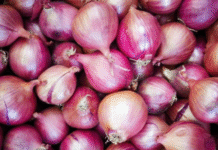Export earnings declined 4.49 percent year-on-year to $2.72 billion in February due to a slowdown in apparel shipments that account for more than 80 percent of national exports.
February’s receipts were 21.49 percent less than that in January at $3.31 billion, according to data from Export Promotion Bureau. The amount was also 9.64 percent lower than the monthly target of $3.01 billion, data showed.
However, overall exports in July-February increased 3.22 percent to $22.83 billion.
Apparel shipments went down due to a fall of the euro against the US dollar as well as the Brexit issues, the US elections and a decline in consumption in the West, said Siddiqur Rahman, president of Bangladesh Garment Manufacturers and Exporters Association.
Rahman said the UK is the third largest export destination for Bangladesh. But exports to this destination began declining due to Brexit that took place in June last year.
Garment shipments to the UK declined 5.19 percent to $1.53 billion in the first half of 2016-17. Usually, Bangladesh exports apparel worth more than $3 billion to the UK in a year.
Britons are suffering from an inflationary pressure due to a fall in the value of the pound.
Similarly, apparel export to the US, the single largest export destination for Bangladesh, declined a bit because of a volatile economy after the national elections.
Of the top 10 exporters to the US, apparel shipments of only three countries were in the negative territory in January. Among the three, Bangladesh’s garment export declined 2.31 percent to $500 million in that month.
Garment exports to the US from India, Pakistan and Vietnam, the major competitors of Bangladesh in the global apparel markets, increased in January.
“People in the western world are now spending more on smart gadgets than on clothing. This is a major reason for a fall in consumption of clothing items worldwide,” Rahman said.
In July-February, earning from the garment sector was recorded at $18.63 billion, which is 2.82 percent higher than that in the corresponding period of the last fiscal year, data showed.
The February receipt from garment export was 5.64 percent lower than the periodic target at $19.75 billion.
“We need to grow at 12.25 percent every year to reach our export target at $50 billion at the end of 2021. But we are growing at only 2 to 4 percent now,” Rahman said.
The jute and jute goods sector was one of the top export performers in the July-February period, with shipments rising 15.28 percent year-on-year to $646.62 million. It was also higher than its periodic target of $626.83 million.
Shipments of leather and leather goods grew well during the eight-month period as well. It stood at $827.62 million, up 9.95 percent year-on-year. This segment too hit its periodic target of $793.30 million.
Furniture exports rose 16.84 percent to $28.52 million and pharmaceuticals 9.94 percent to $60.19 million.
Home textile exports increased 3.16 percent to $500.15 million and plastic products 39.87 percent to $82.37 million, riding on the back of a 10 percent cash incentive on shipments.
Some sectors performed poorly during the period. Exports of frozen and live fishes declined 3.89 percent to $357.95 million. However, it was 1.75 percent higher than the target of $351.78 million.
Exports of petroleum byproducts declined 31.40 percent to $158.04 million.
The government has set the export target of $37 billion for this fiscal year, which is 8 percent higher than the receipts in fiscal 2015-16.
Source: The Daily Star









